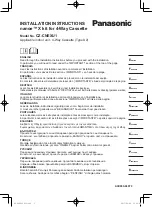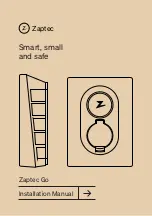
Instruction Manual
Ammonium Electrode
7
9.
Measure out 100 ml of the sample into a 150 ml beaker, add 1 ml of low level ISA, and
place the beaker on the magnetic stirrer. Begin stirring. Lower the electrode tip(s) into the
solution.
10. After the reading has stabilized, record the mV reading and determine the concentration
from the low level calibration curve.
11. Prepare a new low level calibration curve daily. Check the calibration curve every 1-2
hours by repeating Steps 3-7 above.
Low Level Ammonium Determination (using an ion meter)
Follow the procedure given for normal ammonium determinations using an ion meter and the blank
correction procedure.
ELECTRODE CHARACTERISTICS
Reproducibility
Direct electrode measurements reproducible to
±
2% can be obtained if the electrode is calibrated
every hour. Factors such as temperature fluctuations, drift, and noise limit reproducibility.
Reproducibility is independent of concentration within the electrode's operating range.
Interference
Table 3 lists some common cations that, if present in high enough levels, will cause electrode
interference and measurement errors or electrode drift when using the ammonium ion electrodes.
Electrode drift and slow response could indicate the presence of high interference from the ions
listed. Soak the electrode(s) in distilled water for an hour, then for two hours in ammonium standard
solution to restore proper response.
TABLE 3: Concentration of Possible Interference Causing a 10% Error at Various
Levels of NH
4
Cl; Background Ionic Strength is 0.12M NaCl.
Interference
(moles/liter) 10-
2
M NH
4
+1
10-
3
M NH
4
+1
10-
4
M NH
4
+1
Cs
+1
3.0X10-
3
3.0X10-
4
3.0X10-
5
K
+1
1.0X10-
2
1.0X10-
3
1.0X10-
4
Tl
+1
6.0X10-
2
6.0X10-
3
6.0X10-
4
H
+1
1.0X10-
1
1.0X10-
2
1.0X10-
3
Ag
+1
1.0X10
1
1.0
1.0X10-
1
+Tris
+1
1.0X10
1
1.0
1.0X10-
1


































